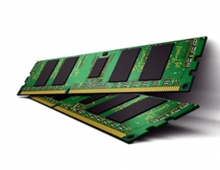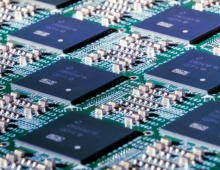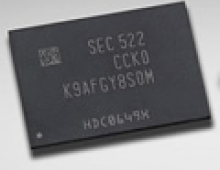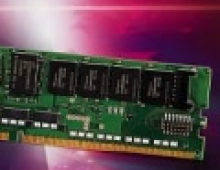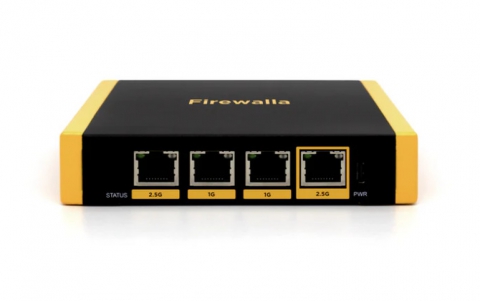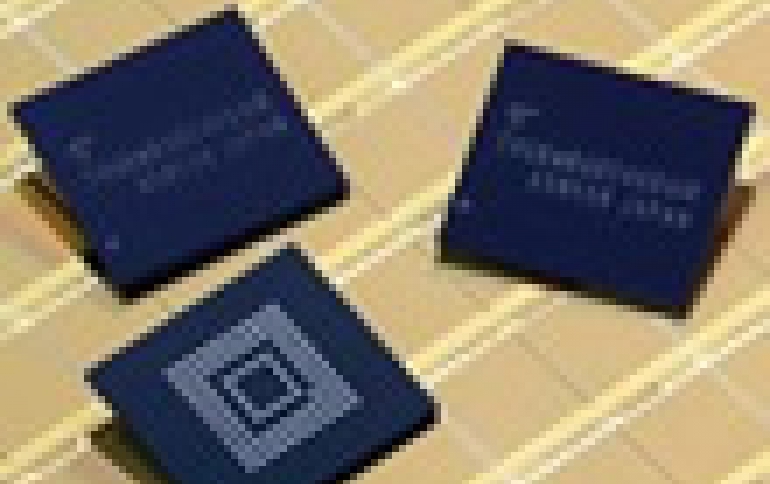
NAND Flash Is Shrinked And Gradually Replaces DRAM
As we are moving into the post-PC era with the expansion of tablets and smartphones, NAND flash memory technology is also advancing and founds its way to systems currently using DRAM memory.
According to a TechInsights report, NAND flash revenue is expected to reach $30 billion this year, surpassing DRAM revenue for the first time. The report also predicts a drop in NAND's average selling price, which will help increase market penetration.
NAND flash makers are controlling the cost of materials and manufacturing by lowering the process nodes. By doing that, storage density is increased and more memory is delivered in the same-sized package, while cutting off the manufacturing costs.
Toshiba's 19nm NAND flash is currently into volume production. The chips feature a two-bit-per-cell architecture for a total of 64 Gb of capacity in a 94 mm2 device and can deliver write speeds as high as 25MB/s. Toshiba has also announced a family of embedded NAND flash memory modules aimed at smartphones, video cameras, and tablets. Densities range from 4GB to 128GB. The company also has three-bit-per-cell chips under development.
Samsung is working with a "10nm-class" triple-level-cell NAND flash chip, which is actually a chip fabricated using the 16-nm process, according to TechInsights. Samsung is shipping 128-Gb chips for use in solid-state drives aimed at the enterprise storage market. By leveraging its 20-nm production lines for the new chips, the company expects to boost manufacturing yields by roughly 30%. Based on the toggle DDR 2.0 interface, the devices support 400MB/s data transfer rates.
Micron has began sampling its 16nm NAND flash chip based on planar-cell technology. The company is targeting volume production of the 128Gb MLC devices for the fourth quarter, with SSD availability in 2014. Micron is also working on its hybrid memory cube (HMC) and has started shipping 2GB HMC engineering samples last September. The company expects to start volume production of 2GB and 4GB HMC later in 2014.
SK Hynix has released a 16-nm, 64Gb multi-level cell (MLC) NAND flash chip. The S. Korean company uses an insulating air gap, rather than a material thin film. This helps prevent cell-to-cell interference.
SK Hynix has also developed 128Gb (16-gigabytes, 16GB) MLC chips based on the specification and endurance of 16nm 64Gb MLC, with mass production scheduled for early 2014.
SK hynix also plans to accelerating the development of TLC (Triple Level Cell) and 3D NAND Flash.
NAND flash makers are controlling the cost of materials and manufacturing by lowering the process nodes. By doing that, storage density is increased and more memory is delivered in the same-sized package, while cutting off the manufacturing costs.
Toshiba's 19nm NAND flash is currently into volume production. The chips feature a two-bit-per-cell architecture for a total of 64 Gb of capacity in a 94 mm2 device and can deliver write speeds as high as 25MB/s. Toshiba has also announced a family of embedded NAND flash memory modules aimed at smartphones, video cameras, and tablets. Densities range from 4GB to 128GB. The company also has three-bit-per-cell chips under development.
Samsung is working with a "10nm-class" triple-level-cell NAND flash chip, which is actually a chip fabricated using the 16-nm process, according to TechInsights. Samsung is shipping 128-Gb chips for use in solid-state drives aimed at the enterprise storage market. By leveraging its 20-nm production lines for the new chips, the company expects to boost manufacturing yields by roughly 30%. Based on the toggle DDR 2.0 interface, the devices support 400MB/s data transfer rates.
Micron has began sampling its 16nm NAND flash chip based on planar-cell technology. The company is targeting volume production of the 128Gb MLC devices for the fourth quarter, with SSD availability in 2014. Micron is also working on its hybrid memory cube (HMC) and has started shipping 2GB HMC engineering samples last September. The company expects to start volume production of 2GB and 4GB HMC later in 2014.
SK Hynix has released a 16-nm, 64Gb multi-level cell (MLC) NAND flash chip. The S. Korean company uses an insulating air gap, rather than a material thin film. This helps prevent cell-to-cell interference.
SK Hynix has also developed 128Gb (16-gigabytes, 16GB) MLC chips based on the specification and endurance of 16nm 64Gb MLC, with mass production scheduled for early 2014.
SK hynix also plans to accelerating the development of TLC (Triple Level Cell) and 3D NAND Flash.

